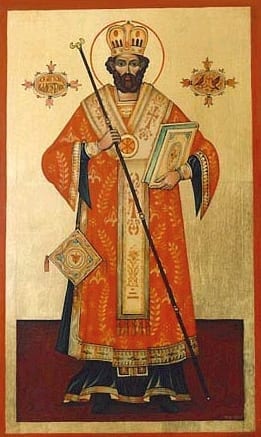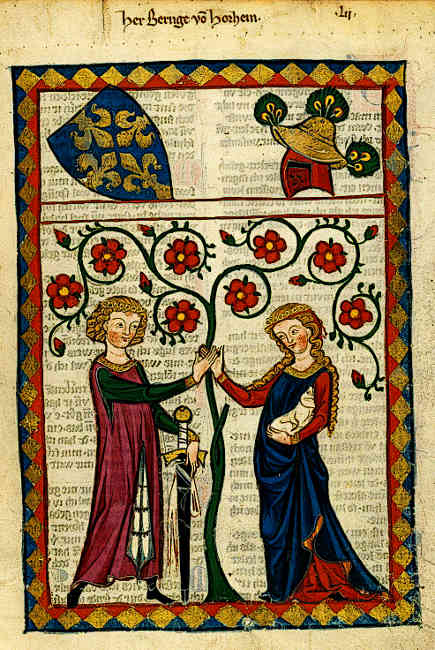Robert Macfarlane, Level Three Undergraduate
Valentine’s Day is a significant annual moment in the modern calendar, but was this always the case? Also, was it always an excuse for individuals or couples to behave in an overly impassioned or romantic manner?
Our story begins with St. Valentine who was born around 226AD in central Italy. Valentine was a very common name in late antiquity, stemming from the Latin Valentinus. He was the first of many martyrs recognized by the Roman Catholic Church to have had the name. As was the case with many Roman saints, Valentine’s martyrdom was a result of his persecution as a Christian – a type of religious discrimination that lasted in the Roman Empire until 313AD. Valentine was imprisoned and then killed for general ministerial malpractice and for overseeing the weddings of Roman soldiers who were forbidden from marrying by law.

When the emperor Constantine legalized the Christian religion, under the edict of Milan in 313AD, February 14th was renamed St. Valentine’s feast day. However, it would be over a century until this date was celebrated by loving couples. Geoffrey Chaucer’s fourteenth-century poetry has been interpreted as evidence of the first instance where ‘Valentine’s Day’ was explicitly associated with romance. Chaucer makes the connection in relation to the mating rituals of birds, which he believed took place predominantly around mid-February. ‘Parliament of Foules’ has been used by many scholars who have drawn from it intriguing conclusions about the culture of medieval England. Haldeen Braddy speculates that the poem recounts Chaucer’s efforts to engineer a marriage between the King of England and a Princess of France. However, it might instead concern Richard II’s marriage, which occurred during the course of the writing of Parliament of Foules in 1380. The works of Chaucer have thus provided rich sources through which to examine the period in which they were written, particularly abstract subjects like Valentine’s Day and love.

Chaucer’s work helped to define ideas of medieval ‘courtly love’, with chivalry a defining aspect of this culture. This was personified by medieval knights and their attitudes towards women and courtship. The rituals of courtly love were key to this period. This was love that forewent sexual interaction and instead, centred on different ways of displaying affection such as dancing, exchanging letters, as well as other gifts. Furthermore, courtly love was usually performed outside of marriage, regardless of whether either partner was married. This was because marriage between medieval nobility was a contractual relationship that focused not on romance, but on procreation, politics and profit. True courtly love was sacred and had no boundaries, surpassing the barriers of marriage in ways that would today appear almost adulterous.

Jack B Oruch argues that Chaucer’s poetry was instrumental in creating the mythology of Valentine’s Day. Later significant literary works, such as ‘A Knight’s Tale’ and ‘Romeo & Juliet’, helped to popularize this type of romance. Through the rest of the early modern period, the traditions of Valentine’s Day began to emerge, with the act of gift giving becoming common place. Romantic imagery including doves, hearts and the god Cupid were also increasingly incorporated into visual and material culture, such as banners and coats of arms. With the advent of the 19th century, methods of mass production unlocked the economic potential of Valentine’s Day and its traditions by providing businesses, like chocolatiers, with opportunities to develop new products and to sell into new markets. Roses were suddenly in high demand in mid-February and restaurants knew they could expect an upsurge in reservations for two!
To conclude, the exact meaning of Valentine’s Day is not written in stone. To some extent, ideas of love mirror those of the original St. Valentine who sought to help Roman couples marry. That is not to say that the ideals of medieval chivalry are dead though: many individuals still engage in courtship rituals in order to woo new or old lovers, whether it is through the exchanging of (text) messages, through gift-giving, or on the dance floor at one of the UK’s many Valentine’s Day-themed club nights.
Edited by Amber Coombs
Further Reading
Braddy, Haldeen, ‘Chaucer and the French Poet Graunson’, Imprint Unknown, August 1968, 0804600392
Chaucer, Geoffrey, ‘Parliament of Fowls’, CreateSpace Independent Publishing Platform, September 28th, 2015, 1517564425
Kelly, M J. Ansgar Kelly, Henry. ‘Chaucer and the Cult of Saint Valentine’, Davis Medieval Texts & Studies, Brill, December 1st, 1986, 9004078495
Oruch, Jack B, ‘St. Valentine, Chaucer and Spring in February’, Speculum, Volume 56, No. 3, The University of Chicago Press, July 1981, pp. 534-565